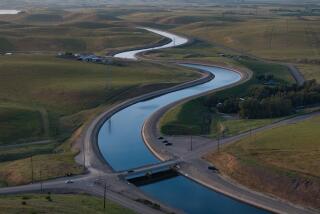How do you wrap an iceberg?

As part of a new study of future water shortages in the Colorado River Basin, the U.S. Bureau of Reclamation solicited ideas on how to solve the looming gap between supply and demand.
They received about 160 suggestions, ranging from the common-sense (use less water) to the ideological (control the population) to the far-fetched (tow icebergs to Southern California) and the high-tech (reduce evaporation from reservoirs by covering them with solar panels).
Although U.S. Interior Secretary Ken Salazar made it clear when he released the lengthy study Wednesday that the more fanciful schemes were dead in the water so to speak, the analysis included at least a cursory examination of them.
Icebergs rated about half a page, including such tidbits as the fact that a small one contains 250 acre feet to 850 acre feet of water. “Assuming approximately one iceberg [is] transported per day, this would yield approximately 200,000” acre feet a year. (An acre foot is enough to supply two households for one year.)
To get them south, the icebergs would be wrapped with large water bags in the Alaska region and pulled along by tug boats down the coast to Southern California. As the water melted in the bags, it would be pumped to a transfer station in port and piped to inland reservoirs.
That would require the leasing of some big tug boats, construction of a new port terminal and pipelines to the reservoirs. All in all not a cheap proposition. The reclamation bureau estimated the water would wind up costing $2,700 an acre foot, more than three times what water agencies pay for imported supplies from the Metropolitan Water District of Southern California.
Piping water from the mouth of the Columbia River in the Pacific Northwest, another suggestion, would be more complicated. Under that scenario, more than 1,000 miles of 144-inch subsea pipeline would have to be constructed across large submarine canyons. The water’s estimated price tag: at least $3,400 an acre foot.
That would be a bargain compared to using “floatovoltaic coverage” to reduce reservoir evaporation. Even after revenue from power sales was counted, the saved water would cost an estimated $20,000 an acre foot.
Dismissing such proposals as politically and technically impractical, Salazar focused on more conventional water supply options such as conservation, recycling and desalination of brackish groundwater and seawater.







